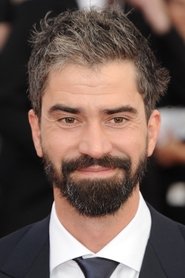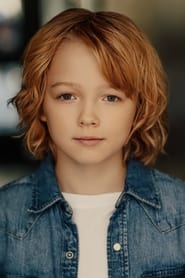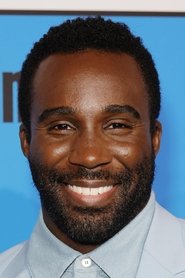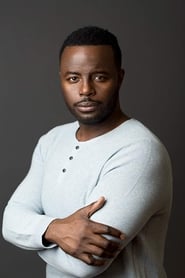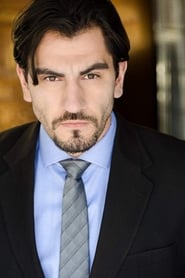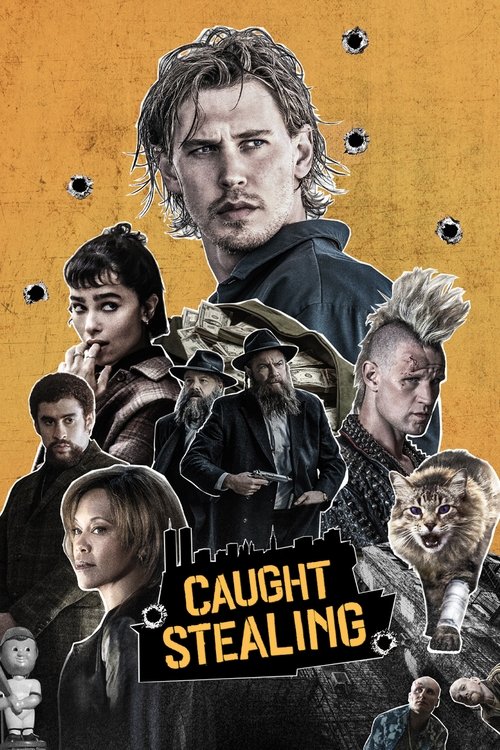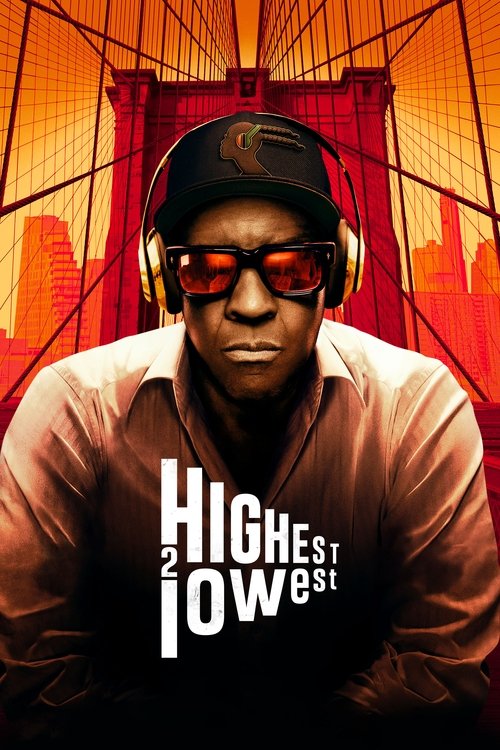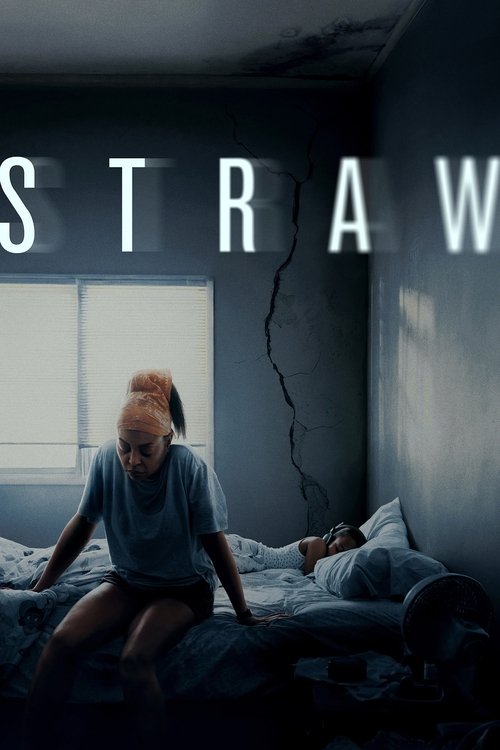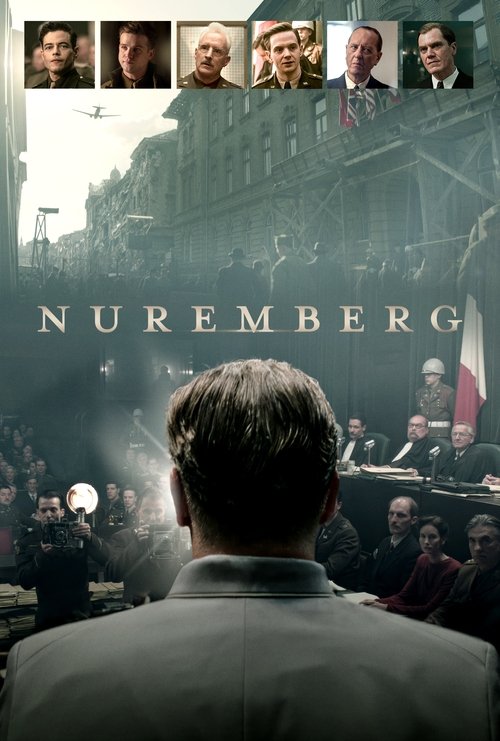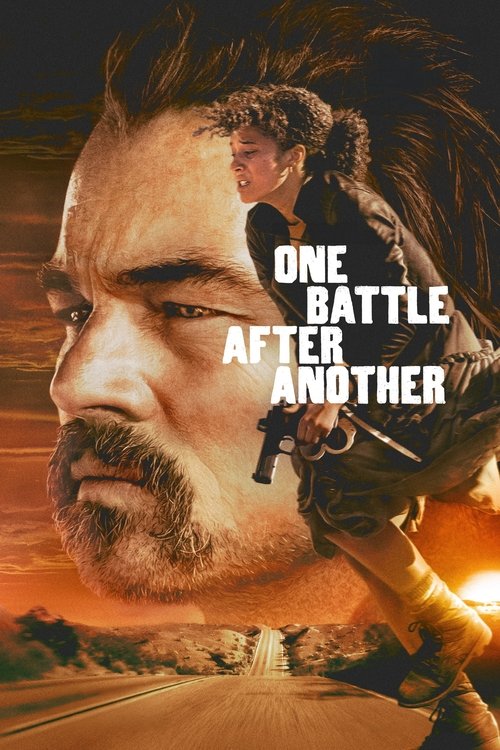
Ask Your Own Question
What is the plot?
Caleb Faulkner wakes to the steady rhythm of his life on the margins: a pickup idling in the driveway, the smell of oil and sawdust from the yard where he keeps his uncle Benji's trucks, and the small, stubborn routine of a man trying to keep his past from swallowing him. He works for his uncle Benji in a construction supply operation that trades on gray ethics; Caleb loads pallets and hauls materials, and he accepts the close-lipped transactions that come with the job. He has a son, Barron, who is a bright, curious child and the center of Caleb's attempts at quiet recovery. Caleb's history includes violence that he has been trying to outwalk, and his days are structured around repairing what he can while avoiding the old impulses.
The life Caleb is building fractures the night Barron disappears. Barron fails to come home from a day outside, and Caleb and Benji begin frantic searches, moving through neighborhoods, calling friends and neighbors, showing pictures to anyone who will look. Police take a report but do not mobilize the kind of search Caleb believes is necessary. The missing-room of the house presses on Caleb; he combs the routes Barron likes to take, the tracks behind town, the waterfront where they built small fires in the summer. Hours stretch into days. When officers find Barron's body on a set of train tracks, they treat the discovery with official economy: the coroner's report and the station house conclude suicide. Photographs, a quiet wrapping of evidence, a ruling that closes official inquiry. Caleb refuses that closure. He stares at the photographs, touches Barron's jacket in memory, and he reads the ruling as impossible. The child could not have chosen those tracks in solitude; Caleb searches for moments that do not fit the suicide narrative and grows convinced someone else took Barron to that place or pushed him there.
Anger sharpens into obsession. Caleb spends long nights listening to calls on the police scanner, riding the streets with a flashlight, trying to reconstruct Barron's final hours. He scrutinizes classmates, peers, and the adults who hover around them. One name returns again and again in the margins of conversation: Ethan, a boy from Barron's class who comes from a family at the opposite end of town from Caleb's. Ethan is the son of Lyle Chambers, a prominent local politician whose media reach and civic influence curl into every public institution. Caleb places Ethan at the scene of his obsessions because he believes a child who is often present when Barron is around might have seen more than he told. Frustration and grief push Caleb toward an act that will sever any remaining equilibrium: he abducts Ethan.
Caleb takes Ethan away from his life and drives him to a remote lakeside house--Barron's Cove--a house where he once went with his son. The cove is a narrow spit of land that holds summer memories and the echo of a child's laughter for Caleb. When he arrives he secures the property: the building is isolated, the water a vast, indifferent audience. He brings Ethan to the house and keeps him there against his will. At first, their interactions are hostile and raw. Caleb demands answers; Ethan answers with the flatness of a child who has learned to say what will soothe adults. Caleb grows impatient and harder. He uses methods meant to break the practiced evasions--long, relentless questions, bouts of silence meant to unsettle the boy, and the constant reminder that this place held Barron's happiest days. Ethan refuses to give the clear-cut confession Caleb seeks, and his evasions inflame the older man's anger.
As the days pass, the dynamic between captor and captive shifts in barely perceptible ways. Caleb watches Ethan for signs--marks on the body, the way he recoils from certain phrases, how he flinches at names--and he begins to see bruises and folded behaviors that do not belong to a child simply hiding the truth. The boy's answers fracture into fragments. Ethan reveals that his household is a place where appearances are everything and fear is the undercurrent. He shows Caleb a private wound: subtle but consistent signs of control and intimidation that point to mistreatment within his family. Under repeated questioning, Ethan speaks of cold silences from Lyle, of punishments that are not only physical but personal, and of being taught how to hold his face in public so that strangers see nothing they can use. A pattern emerges that places Lyle's household authority over Ethan's autonomy.
Caleb's anger recalibrates from prosecuting a perceived murderer to protecting a child who has been harmed. He starts treating Ethan less as an object to be wrung for information and more as the vulnerable human being he is. He brings food to him that he would have given Barron, he keeps watch over his sleep, and he explains to Ethan the world outside the Cove that will not help him. Slowly, Ethan loosens; he admits things he had tightly kept, not only about his father's temper but about moments between him and Barron that gain new, devastating shape in Caleb's mind. Ethan confesses that jealousy and fear hardened inside him and that, in a moment he cannot fully name, his actions contributed to what happened to Barron. He does not give a tidy account of intention versus accident; instead he describes a pattern of rivalry and a single incident where Barron's fall becomes inevitable after a chain of choices. The voice is small and shamed. He tells Caleb that his emotions--rage, envy, a craving to be seen--pushed him toward behavior that he now understands had catastrophic consequences.
Meanwhile, Lyle Chambers mobilizes his resources. He does not remain a background threat; he turns public. Through his political contacts and local news outlets, Lyle constructs a counter-narrative: he calls Caleb a dangerous fugitive and characterizes the abduction as the act of a man unmoored by grief and long predisposed to violence. Local reports carry Lyle's statements, which emphasize the need to protect Ethan and to recapture a man who has broken the law. Photographers stake out Benji's yard and the supply yard where Caleb works. Benji grows alarmed by the attention and by the implicit risk to their business. Lyle uses every available broadcast to shape the town's perception and to ensure that law enforcement has political cover to pursue Caleb aggressively.
Detective Navarro emerges as the official face of the investigation into Barron's death. He keeps a professional distance from the spectacle Lyle creates; Navarro is a detective who listens to evidence more than slogans. He follows leads that do not align with the neat narrative presented by the politician. Navarro visits the Faulkner property, he checks timelines and school records, and he returns to the train tracks with forensic technicians. He notices details that the early ruling glossed over: footprints inconsistent with a single person, a lack of personal materials that would suggest deliberate self-harm, and witness statements that suggest Barron had been with peers shortly before his death. Detective Navarro's inquiries put him at odds with the swift and convenient closure the coroner and town officials want. As Lyle amplifies his calls for action against Caleb, Navarro pursues the quieter work of reconstruction.
At Barron's Cove, the tension between Caleb and Ethan reaches a breaking point. Ethan confesses in a way that finally satisfies some of Caleb's need for accountability: he admits that in a fit of jealousy and confusion he confronted Barron and that their altercation precipitated Barron's movement toward the tracks. He cannot, in the words he has for this episode, declare he intended death; instead he speaks of a shove, a sudden loss of balance, and then the frantic aftermath when both boys realize the train tracks are where Barron lies broken. Ethan's voice shakes as he recounts the fight and his subsequent paralysis; he tells Caleb how he ran away instead of calling for help because he feared what his father would do if anyone knew he had been involved in an altercation that left another boy dead. Ethan describes the weight of the secret--the guilt and the fear that kept him silent--and how that fear was bathed in a home life where consequences were severe and privacy was a weapon. Caleb listens and, in listening, absorbs details that transform suspicion into a picture of culpability. He records the confession in the only way he can: by holding Ethan close and by promising him safety from the force that raised him.
Caleb shifts from interrogator to protector. He begins to craft a plan not only for truth but for safety: he wants Ethan out of the orbit of Lyle Chambers. Caleb recognizes that the town will swallow Ethan whole if Lyle continues to prosecute his own narrative. He tries to reach Detective Navarro, to tell him what he knows and to urge protection for the boy. Navarro, constrained by procedure and by the optics of a kidnapper with a balm of confession in his hands, approaches the situation with caution. He does not immediately endorse Caleb's unilateral methods, but he listens to the facts Caleb offers and he keeps his own investigation open. Navarro presses for corroboration and for statements that will hold up in court; he interviews witnesses and revisits the tracks with Ethan's and Barron's timelines in hand.
Lyle responds to this tightening with force. He arrives at Barron's Cove with legal threats, with media leaning on his words, and with an assertion that Ethan is his son and must be returned to him. The confrontation between Lyle and Caleb at the lake house is public and loud. Lyle accuses Caleb of using Barron's death to advance his vendetta; he denounces the man in terms meant to resonate with voters and with camera lenses. Caleb answers not with the eloquence of a politician but with the plain ache of a father who does not accept the neat answer of suicide and who sees, now, a boy who needs rescue. Lyle lashes back with threats of legal retribution and with the promise that he will use every tool at his disposal to expose the kidnapping and discredit Caleb's account.
Police activity escalates. Officers converge on the cove, their motors punching through the stillness. Detective Navarro coordinates the response while field units secure the perimeter. Navarro confronts Caleb and demands that he release Ethan; he also observes Ethan's condition and the admissions he has made. The detective balances the letter of the law--kidnapping is a charge on its own--with the moral complication that the child in his custody has both confessed involvement and allegations of abuse at home. Navarro listens to Ethan's story: the confession about the altercation with Barron, the fear of Lyle, and the days of silence following the death. Navarro also weighs the forensic inconsistencies he has found at the tracks and the witness statements that suggest more than a private suicide. He presses for a clear record.
Under pressure, Ethan affirms his earlier admissions to the assembled officers and to a recorded statement facilitated by Navarro. He tells them, in a voice that trembles but that refuses to hide the truth, about the fight with Barron, the shove that sent the other boy toward the tracks, and his subsequent flight. He describes his fear of Lyle's response and his knowledge that Barron lay motionless when he left. Ethan's confession is precise enough to re-open the investigation. Navarro places Ethan into protective custody as the legal system reconfigures to account for a child who is both a suspect and a subject of abuse. Authorities separate Ethan from Lyle under the terms of immediate protective orders and begin the process of assessing his statements and his needs.
The legal and public fallout accelerates. Lyle's campaign-style communications shift from condemnation of Caleb to damage control over his own family's image. Attorneys and social services step in to evaluate Ethan, and prosecutors review the statements to determine how to proceed against a minor who admits to causing harm. Detective Navarro continues to pursue evidence that will clarify responsibility: he interviews classmates, rechecks timelines, and secures material from the scene that undercuts the suicide ruling. He uncovers corroborating testimony that aligns with Ethan's account and he compiles the pieces that will allow for a viable criminal case or an adjudicative process that accounts for Ethan's age and the coercive environment Lyle provided.
In the days after the Cove standoff, law enforcement arrests no immediate party for murder in the conventional sense. Instead, authorities chart a path consistent with juvenile adjudication and with the need to address allegations of domestic abuse. Ethan is placed into protective services and into programs designed to assess his culpability while guarding him from reprisal. Lyle faces public scrutiny that erodes his political standing; his private life is subject to investigations about how he may have allowed or facilitated an environment of fear that kept his son from seeking help. Caleb is not exonerated for his decision to kidnap Ethan; he faces legal consequences and the widespread condemnation from those who see his actions as lawless. Yet in the legal and moral accounting that follows, evidence gathered by Detective Navarro and the recorded confessions challenge the original ruling about Barron's death.
The final confrontation unfolds not as a single, violent climax but as a series of procedural reckonings and private reckonings. Ethan testifies to the truth he carried for months, and Navarro's careful gathering of evidence ensures that the recorded accounts align with the physical details of the case. Social workers document Ethan's injuries and extract recollections of punishment and control by Lyle, which provide a fuller context for the boy's reticence. Lyle's attempts to control the narrative lose traction as documentation accumulates. The town watches the slow collapse of a comfortable explanation--suicide--under the weight of witness statements, confessions, and procedural rigor.
In the end, Ethan is taken into protective custody where he undergoes evaluation and begins the work, under supervision, of accounting for the act that led to Barron's death. He does not stand trial in the same manner an adult would; instead the legal system treats him as a juvenile who requires both accountability and care. Lyle's influence is diminished as investigators look into his household practices and as the public responds to the unfolding details. Caleb faces charges for taking Ethan from his home, and the community debates his methods even as some acknowledge that his actions motivated the truth's exposure. Detective Navarro compiles a report that pushes the official record away from the initial suicide ruling and toward an understanding that Barron's death resulted from an altercation involving Ethan and from a series of social failures that allowed a boy to hide his role.
The film closes on a quiet, spare scene at Barron's Cove. Caleb stands at the edge of the water where he once watched Barron play. His body is weary and haunted; he clutches small objects that belonged to his son. He watches a sunset wash the lake and listens to the distant hum of a town rearranging itself in the wake of revelations. He does not find complete resolution--legal files accumulate, charges hang, and no verdict can bring his son back--but he finds in his final acts a measure of redemption. He has exposed the truth, protected a damaged child from the household that failed him, and forced a community to reconsider its quick comforts. As he turns away from the shore, the film leaves him continuing to grieve and to live with the consequences of both his violence and his compassion: a man who, through a fraught series of choices, refuses to let another child remain alone in silence. The last image lingers on the lake's surface as Caleb walks from the water, a figure marked by loss and by the shelter he helped provide for a boy who had been both perpetrator and victim.
What is the ending?
The ending of Barron's Cove (2025) shows Caleb, the grieving father, confronting the corrupt forces behind his son Barron's death. After a tense and violent standoff involving Caleb, Ethan (the boy involved in Barron's death), and the local power players, Caleb exposes the truth and finds a measure of closure. Ethan survives, and Caleb's quest for justice ends with the corrupt officials being implicated, though the emotional scars remain.
Expanded narrative of the ending scene by scene:
The final act begins at the remote cabin where Caleb has been holding Ethan captive, demanding the truth about Barron's death. Initially, their relationship is hostile and fraught with anger, but as the hours pass, a fragile bond forms between the two broken souls. Caleb's rage softens into a desperate need for answers, while Ethan's defiance gives way to vulnerability. This emotional shift is palpable in their interactions, with Caleb's physical intimidation gradually replaced by moments of quiet reflection and shared pain.
Suddenly, the tension escalates as Caleb's criminal uncle Benji and corrupt local officials, including the politician Lyle Chambers and Police Chief Alberts, arrive at the cabin, intent on silencing Caleb and Ethan to cover up the truth. A violent confrontation ensues, with Caleb fighting fiercely to protect Ethan and expose the conspiracy. The scene is charged with raw emotion and physical struggle, highlighting Caleb's determination and the stakes involved.
During the chaos, Detective Navarro, who has been quietly investigating Barron's death despite pressure to drop the case, arrives with backup. His arrival turns the tide, allowing Caleb and Ethan to survive the attack. Navarro's presence symbolizes the possibility of justice breaking through the corruption.
In the aftermath, the truth about Barron's death--that it was not a suicide but a tragic consequence of bullying and a cover-up orchestrated by powerful figures--is brought to light. Ethan, though deeply affected, is spared and begins a tentative path toward healing. Caleb, while still grieving, finds a measure of peace knowing the truth is out and that Barron's death will not be forgotten or dismissed.
The film closes with Caleb standing at Barron's grave, a quiet moment of mourning and resolve. The corrupt officials face investigation, but the emotional toll on Caleb and Ethan remains evident, underscoring the film's themes of grief, trauma, and the complex nature of justice.
In summary, Caleb survives the final conflict, having exposed the corruption behind his son's death. Ethan also survives, their relationship transformed from captor and captive to two individuals bound by shared trauma. The corrupt politicians and police are implicated, though the film leaves the emotional consequences open-ended.
Is there a post-credit scene?
The movie Barron's Cove (2025) does not have a post-credit scene. The film concludes with an ambiguous and emotionally charged ending involving Caleb, but there is no additional scene after the credits to extend or clarify the story further.
The final moments of the movie show Caleb confronting complex family betrayals and ultimately being shot, with a bittersweet reunion scene that may be imagined or symbolic. This ending is the film's definitive conclusion, and no post-credits content exists to provide further narrative or tease future developments.
Who is Ethan in Barron's Cove and what is his relationship to the main characters?
Ethan is a little blonde boy who witnessed Barron's death and is the adoptive son of the corrupt and aggressive Senator Lyle. He is kidnapped by Caleb, the grieving father of Barron, as Caleb seeks answers about his son's death. Over the course of the film, Ethan and Caleb's relationship evolves from hostile abduction to a complex bond formed through shared trauma.
What motivates Caleb to kidnap Ethan in the story?
Caleb kidnaps Ethan because he is desperate for answers about his son Barron's death, which the police quickly and suspiciously rule a suicide without evidence. Believing there is a cover-up involving Senator Lyle and the local police, Caleb takes matters into his own hands by abducting Ethan, the only other witness to the incident.
What role does Senator Lyle play in the plot of Barron's Cove?
Senator Lyle is a corrupt and aggressive politician who is the adoptive father of Ethan. He is involved in the cover-up of Barron's death and aggressively pursues Caleb after Ethan is kidnapped, trying to capture Caleb and protect the secrets surrounding the crime.
How is Caleb characterized throughout the film?
Caleb is portrayed as a violent man with emotional outbursts and deep regrets. He is a grieving father who initially acts out of anger and desperation but gradually learns to prioritize his son's memory and find some peace. His character is complex, showing both brutality and vulnerability as he navigates grief and trauma.
What is the significance of the police investigation and Detective Navarro's role?
The local police chief quickly closes Barron's death case as a suicide, likely due to corruption and political pressure. However, a new detective named Navarro continues to question the circumstances, representing a rare voice of inquiry and resistance against the cover-up. This adds tension and complexity to the unfolding story.
Is this family friendly?
The movie Barron's Cove (2025) is not family friendly and is rated R, indicating it is intended for mature audiences. It contains themes and scenes that may be upsetting or inappropriate for children and sensitive viewers.
Potentially objectionable or upsetting aspects include:
- Violence and intense emotional distress, including a grieving father with a violent past who kidnaps a child.
- Kidnapping and abduction as central plot elements.
- Threatening behavior and use of weapons, such as a blowtorch and an ax, in tense confrontations.
- Depictions of grief, loss, and revenge, which involve strong emotional and psychological intensity.
- References to death and tragedy, including the brutal killing of a child.
- Tense manhunts and confrontations with law enforcement and mobsters, involving physical and emotional conflict.
These elements contribute to a dark, intense thriller atmosphere that is unsuitable for children or viewers sensitive to violence, kidnapping, and emotional trauma.




